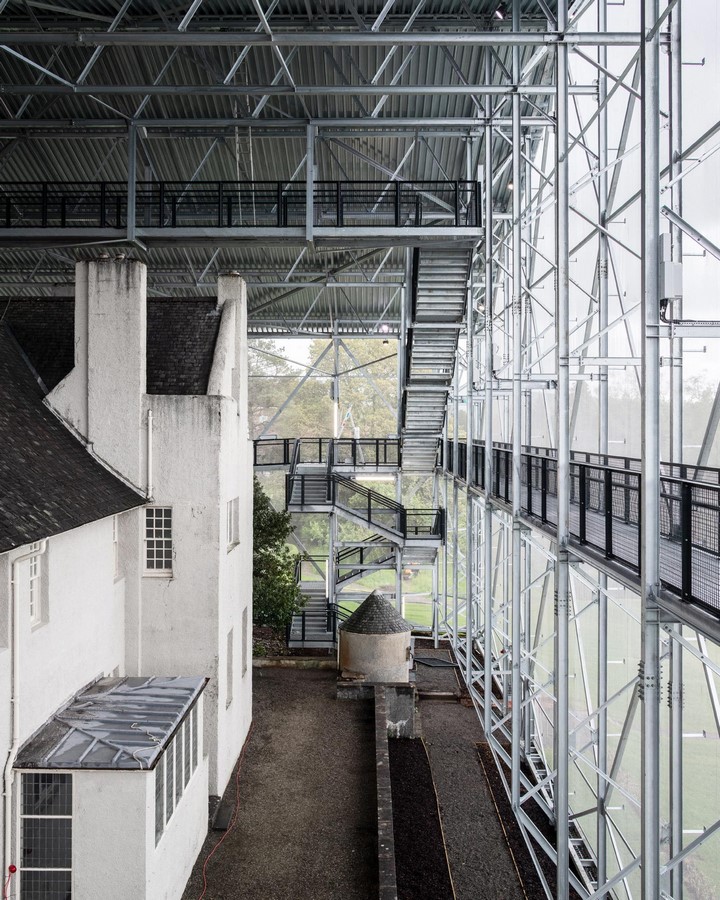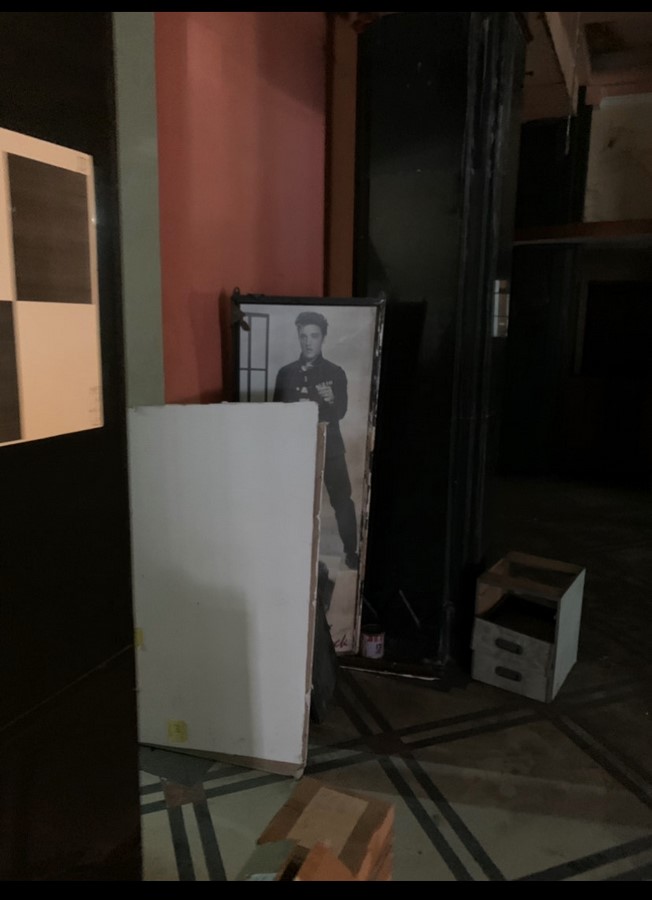Thought
By Bima Poetiray
In a time when design solutions are aimed at curbing the impact that the building and construction industry has on the planet, there are new ways to think about building restoration.
Involving the Public in Restoration Projects
There is a simplicity to the way visitors can have a look at the restoration process in Hill House. Box the early 20th-century house, a significant work of Scottish architect Charles Rennie Mackintosh, and treat the house in Helensburgh as an artifact.

A unique solution to a house that in its own time proposed its radical layout by creating a hybrid of the time’s modernist technological advances mixed with Scottish baronial with its asymmetrical windows and picturesque slated roof.
In an interview with architect Andy Groarke for Wallpaper, he details the thought process behind the choice of design. The box is made of materials that allow the protection of the house from further rot due to rain, while still allowing bees to pollinate through the soft landscape around it. The choice of materiality allows for the house to dry out while still allowing visibility from the outside to allow its relevance as a listed building. On the other hand, walkways are built into the structure to allow visitors to peer at every point of the house.
In the meantime, it gives the restoration team, National Trust Scotland, time to think about how to conserve the building while allowing visitors to be ‘part of the discourse’, as stated in the article.
This project opens up a philosophical consideration of restoration projects through design. Aside from the experts being involved, how can visitors and the public somehow join the decision-making process on a restoration project? The box allows the area surrounding the project to be suspended in progression. To give everyone time to admire the space whilst deciding how best to move forward in the future.
Rethinking Modern Ruins
There is a certain beauty to the way ruins allow vegetation and wildlife to thrive after it is abandoned as a place for human activity. Somewhere in the world is a hotel, with the ambition of being the jewel of the city. Formed with white concrete walls, shaped by its uniform openings, and given character by its reminiscent shape of a cruise line. Done sometime in the 1930s, this hotel was to house the elite of the city with its prominent Art Deco style.
Over time, a conflict of styles between building developers and a continuing decline with rapid expansion across the city forced its closure. What was once a bright white building has dulled with the soot of yellowish-brown pollution from the city.
Inside the building were remnants of human activity that once was.

The makeup of the hotel happens to be dust, cracked plaster, and a few remnants of the 1930s building overlapped with extensions throughout the years. Its layout is characteristic of the old building, but the building’s original interior rarely survived except in a few bathrooms. The treasure of it all is uncovering all this through dust. Walk to the roof and one might find the sight of the city that has long abandoned this building. And in its ruin lies an interesting image.

An essay published in Future Architecture details the potential that these modern ruins possess on the urban landscape. The writers suggest that it is a condition of many things. For one there is the whole duality between nature and civilization, and ruins seem to possess the condition that nature triumphs over civilization. That, however, removes ruins from its historical context. Despite its overgrowth of nature, it still carries social and cultural information of society in the past. There is also a growing movement of exploring ruins as an artistic expression. Whether that be through aestheticizing the look of ruins or the urban exploration movement of documenting these places to be published online. In the essay, the authors declare that the contemporary urban environment tends to exclude not only people socially but also spaces where people could inhabit them. The whole purpose is so that such modern ruins could be reactivated for new social activities.
What the cactus represents is the potential for life to exist outside of society’s spaces. It could possibly act as a design driver for architects or designers looking to preserve the microcosm of vegetation atop the roof. The most likely solution is that the cactus will be removed from the roof, but from that architects could realize the potential to breathe in new activities in these spaces.
Conclusion
These are some of the ways that restoration is being reframed today. There is a greater involvement of the public to provide their opinion. But to do so, exemplary design is required and definitions need to be more inclusive so that our so-called modern ‘ruins’ could be filled with activity. If anything, the job of restoration architects is to create an optimistic vision of contemporary design by making use of what is already available. And through that open up a space that the community could use.
Sources
Carmody Groarke Description
‘The Hill House Box’ Carmody Groarke. [Online] [Accessed on the 1st of November 2023] https://www.carmodygroarke.com/hill-house/
Ednie, C. (2022) ‘Inside Carmody Groarke’s Hill House Box in Scotland
’. 25th of October. Wallpaper*. [Online] [Accessed on 2nd of November 2023]
https://www.wallpaper.com/architecture/hill-house-box-carmody-groarke-scotland
Grozopolous. Kasimati. Et al. Kostorou. (2017) ‘Activate Modern Ruins’ 11th of May. Future Architecture Platform. [Online] [Accessed on 10th of November 2023] https://futurearchitectureplatform.org/news/81/activate-modern-ruins/
Image Source
Figure 1: Dehlin, J. (2016) ‘Dehlin_Hill-House-Mackintosh-Box_06’. Carmody Groarke. [Online image] [Accessed on the 1st of November 2023] https://www.carmodygroarke.com/wp-content/uploads/2016/12/Carmody-Groarke_Johan-Dehlin_Hill-House-Mackintosh-Box_06-1600×2000.jpg
Figure 2 and 3: Poetiray,B. (2023)
Appendix (Unused Sources)
Ideas of Restoration
https://www.e-flux.com/architecture/refugee-heritage/100716/present-state-of-conservation/
https://courtauld.ac.uk/research/research-resources/publications/courtauld-books-online/ruskins-ecologies-figures-of-relation-from-modern-painters-to-the-storm-cloud/14-the-afterlife-of-dying-buildings-ruskin-and-preservation-in-the-twenty-first-century-ryan-roark/
https://canopycanopycanopy.com/contents/the_anatomy_of_ruins?schema:keywords=tc:tag_architecture














